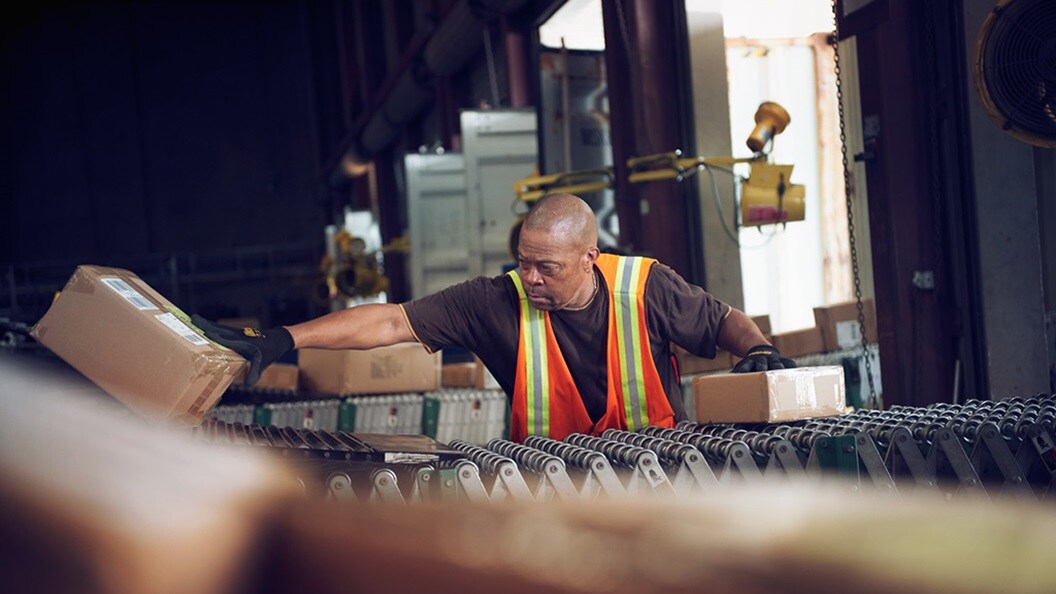The process of moving goods from their final destination back to the manufacturer or another location for the purpose of returns, recycling, refurbishing, or disposal, is not a new one. Reverse logistics have long been a part of multiple industries, like tech, such as mobile devices and computer, and auto, such as car parts.
Reverse logistics differentiates from traditional logistics, which focuses on the forward flow of products from the producer to the consumer, instead handling the backward flow, dealing with products that are no longer needed or wanted by the consumer.
The 5 R’s of Reverse Logistics
Typically, when discussing reverse logistics, the focus is on 5 R’s of it. Not to be confused with the 3 (or 9) R’s of circular economy, these 5 R’s describe the key steps in managing the return and reuse of products in the supply chain, focusing on cutting waste and recovering value. They are:
- Returns: Handling items customers send back because they’re defective or unwanted.
- Resell: Refurbishing or repackaging items to sell them again.
- Repair: Fixing damaged products so they can be reused or resold.
- Recycle: Recovering materials from old or returned items to use again.
- Replace: Giving customers a new product in exchange for a defective one, usually under warranty.
These 5 R’s help companies optimise reverse logistics operations and improve customer satisfaction whilst also maximising resource efficiency.
Reverse logistics in the realm of fashion
It is only recently that there has a been a strong push for it in the realm of fashion, despite companies and startups steadily taking up more room in the field of reverse logistics, like ESO Recycling, that utilises waste products from sports, such as shoes, bicycle tyres and inner tube to create new resources. Through a recycling process, using new technologies for waste treatment with efficient and competitive machinery, the startup is able to reduce the amount of waste sent to landfill, creating circular economy processes with the return of new secondary raw material. Other companies like Reverse Resources have developed a SaaS platform to digitise, connecting and scaling global textile-to-textile recycling, offering digital tools for mapping, steering and tracing textile waste flows along circular supply chains. Usha Yarns Limited mechanically recycles post-industrial waste, returning it to the cycle of production and use. The Hurd Co. proposes to use agriwaste to create textiles, whilst Evoco enables companies that create consumer goods to de-fossilise with materials that enhance product performance, like bio-foam for footwear, lowering greenhouse gas (GHG) emissions. And this is just naming a few of the many options that are available in the industry.
What do fashion companies stand to gain from implementing reverse logistics?
To implement reverse logistics, there needs to be a strong economical, ethical and production incentive. At the same time, there needs to be interest and willingness to buy-in from the consumer for it to become a reality. Whilst there are a multitude of reasons the fashion industry should collectively push to implement reverse logistics, below are the central five reasons that reverse logistics are unmistakably the missing link to the fashion brand’s supply chain.
- Regulatory compliance: The fashion industry is facing new hurdles as global and regional regulations are being putting in place, demanding more transparency. Laws regarding circular fashion are coming into play, like the ones from the EU, as well France’s groundbreaking legislation against fast fashion. These regulations not only vary from area to region; they also vary from country to country. It can be difficult to figure out what companies should prioritise. Implementing reverse logistics can help companies comply with applicable regulations, avoiding fines, legal issues or penalties. Furthermore, reverse logistics helps reduce waste through recycling, repurposing, or proper disposal of returned or unsold products. With reverse logistics, companies could potentially decrease waste and associated pollution. Additionally, the damage to the brand’s overall image could result in consumers opting to move to other companies.
- Resource Efficiency and Cost Savings: Fashion companies can find resource efficiency and cost savings by reusing materials, restoring and revamping items, and reselling returned products. Where some fashion companies have been outed for destroying products that haven’t sold or have small scale issues, others have found cost savings by re-selling, like Zalando’s pre-owned/second hand section. Amazon has a similar solution. Through options like this, companies can recover some of the costs associated with production and reduce the need for new raw materials, leading to significant cost savings. Reverse logistics also allows companies to maximise the use of materials and products, reducing the strain on natural resources. This is especially important as raw materials become more scarce and expensive.
- Customer Satisfaction: Customer satisfaction is key for fashion companies to maintain their selling ability. Companies that have lag time in returns can lead to significant markdowns for merchandise being resold. Whilst poorly handled return systems can impact a negative financial impact for business, inefficient handling of returns and exchanges can frustrate customers, leading to poor customer service experiences. By offering easy returns, exchanges, and repairs through a well-managed reverse logistics system, brands win points with the consumer and garners more customer loyalty.
- Brand Reputation: Consumers are increasingly aware of the environmental impacts of the fashion industry. Gen Z, the biggest generation born, reports more anxiety for the future than any previous generation before. This actively impacts the way they shop and what they are willing to interact with brand. A study from McKinsey also shows consumers consider "sustainability" a priority for them, and are willing to back it up with their wallets. Companies that actively engage in practices like reverse logistics, can enhance their reputation and appeal to customer demands, setting themselves apart from competitors.
- Missed Innovation Opportunities: As visible from this year’s Global Fashion Agenda’s Global Fashion Summit, circular systems and reverse logistics are key innovation opportunities. Without reverse logistics, companies miss out on the chance to innovate in areas like product design, material reuse, and circular economy practices, putting them at a competitive disadvantage in a market that values circularity. By implementing reverse logistics, companies open to innovative business models, such as resale markets, upcycling and reuse programs, and rental services, create new business opportunities.
Winning the “now” with reverse logistics
Implementing reverse logistics in the fashion industry is not just a trend, it’s a must. It's a vital step toward strategic transformation, efficiency, and long-term success. As the industry faces increasing regulatory pressures, rising consumer demand for circular practices, and the need to innovate, reverse logistics offers a strategic solution. By embracing the 5 R's—returns, resell, repair, recycle, and replace—fashion companies can reduce waste, cut costs, enhance customer satisfaction, all while bolstering brand loyalty and positioning themselves as a trusted partner to customers. Those that fail to adapt risk missing out on these opportunities and may find themselves left behind in an industry that is rapidly evolving.
Sign up to The Logistics Pulse newsletter
You did it, welcome onboard!
We're sorry, but there was a problem sending your contact request.
Please review the form fields and ensure all required information is provided correctly. If the issue persists, please contact our support team for further assistance.
Sign up to The Logistics Pulse newsletter
Receive our insights directly in your mailbox by signing up through this form and enter a world of truly integrated logistics. Get inspired by our selection of articles that help you navigate supply chains, understand industry trends, and shape your logistics strategy. You can unsubscribe anytime.
I agree to receive logistics related news and marketing updates by email, phone, messaging services (e.g. WhatsApp) and other digital platforms, including but not limited to social media (e.g., LinkedIn) from A. P. Moller-Maersk and its affiliated companies (see latest company overview). I understand that I can opt out of such Maersk communications at any time by clicking the unsubscribe link. To see how we use your personal data, please read our Privacy Notification.
By completing this form, you confirm that you agree to the use of your personal data by Maersk as described in our Privacy Notification.













